Dubrovnik’s monuments are some of the most recognisable points in the Old Town, from historic gates and fountains to churches, monasteries and defensive towers. Several locations also appear in the Game of Thrones film sites in and around Old Town Dubrovnik, making them easy to recognise when walking the main street, Stradun.
If you want a wider picture of what to see and do during your visit, explore The best things to do in Dubrovnik. Many monuments are also used for concerts, festivals and community events, which you can follow in our events in Dubrovnik guide. For more background, see how these sites fit into the city’s wider culture in Dubrovnik.
Overview of Dubrovnik Old Town monuments
The main monuments in Dubrovnik are concentrated within the Old Town, making them easy to see on a single walk. Most are located along or just off Stradun, with others positioned on the city walls or near the old gates. You can explore them in any order, but many visitors follow a simple loop between Pile Gate and Ploče Gate.
- Stradun - the central street linking most key monuments.
- Pile Gate - the main entrance to the Old Town.
- Onofrio’s Fountains - iconic landmarks at both ends of Stradun.
- Church of the Holy Savior - an important survivor of the 1667 earthquake.
- Franciscan Monastery - known for its historic pharmacy.
- City Walls - surrounding fortifications with several major towers.
- Fortress St. Ivan and Fortress Revelin - key defensive structures at the eastern harbour.
Dubrovnik Super Saver:
Cable Car Ride and Old Town Walking Tour plus City Walls
Discover the charm and history of Dubrovnik on this unforgettable journey. Explore the UNESCO World Heritage Site of Dubrovnik Old Town's narrow and winding streets, and admire the mesmerising views from the 16th-century city walls. Take your experience to new heights with a cable car ride to Mt. Srđ for panoramic views. Book your tour now with a knowledgeable expert.
How to visit Dubrovnik monuments
Most visitors explore the main monuments by walking through the Old Town. Distances are short, and almost all sites can be seen on a simple route starting at Pile Gate and ending at Ploče Gate. Early morning and late afternoon are the most comfortable times to walk, especially in summer.
Walking route through the main monuments
A typical visit begins at Pile Gate, continues along Stradun past Onofrio’s Fountains and the Church of the Holy Savior, then leads to the Franciscan Monastery. From here, you can follow smaller streets toward Luža Square, or continue to Ploče Gate and the eastern harbour area. The City Walls, nearby forts and museums are easy detours along the way.
Tickets, passes and guided tours
Some monuments can be visited freely, while others require an entry ticket. The City Walls have a separate ticket and usually attract the most visitors. If you plan to visit several museums and cultural sites, check the Dubrovnik Pass, which includes a range of attractions and can offer good value. Always refer to official sources for the latest opening times and prices.
Practical tips for visiting
- Start early to avoid crowds and strong sun, especially in peak season.
- Wear comfortable shoes, as the stone streets can be slippery.
- Churches and monasteries may require modest clothing to enter.
- The Old Town has many steps, so some areas may be challenging for visitors with mobility issues.
- Carry water during warmer months, as shade can be limited.
For more ideas on combining monuments with viewpoints, beaches and nearby islands, take a look at the best things to do in Dubrovnik.
Churches and monasteries
Several of Dubrovnik’s most recognisable monuments are religious buildings that played an important role in the city’s history. Most of them are located just off Stradun, making them easy to include in a short walking route.
Franciscan Monastery
Franciscan Monastery is built in the transitional Romanesque-Gothic style. The construction started in 1337. In 1667 it was completely destroyed in the Great Earthquake. The door with Pieta at Stradun is the only thing left from the original church after it has been rebuilt. The Cluster of the Franciscan Monastery is considered to be a masterpiece of architecture in Dubrovnik. It was built in Romanesque-Gothic style by the famous Mihoje Brajkov from Bara. The capitals are a true example of Romanesque style, with bestiary motives bringing the spirit of Gothic as well.
Pieta at the church of Male brače - gothic sculpture done by Leonard and Petar Petrović (1498). The lofty interior of the monastery (reputed once to have had ceiling paintings by Titian) was reconstructed after the Great Earthquake of 1667.
The Old Pharmacy, located inside the Franciscan monastery, was opened in 1317. It is the third oldest pharmacy in Europe, but the only one still working. The inventories, ceramics, bowls, laboratory equipment and old medical books of the old Pharmacy are kept in the Franciscan Monastery Museum, among other highly valued and priceless objects of Dubrovnik's historic and cultural past.
The Franciscan monastery's library possesses 30,000 volumes, 22 incunabula, 1,500 valuable handwritten documents. The well-labeled exhibits include a 15th century silver-gilt cross and silver thurible, an 18th century crucifix from Jerusalem in mother-of-pearl on olive wood, an martyrology (1541) by Bemardin Gucetić (Gozze) and illuminated Psalters.
Among the pictures is one of Ruđer Bošković painted in London in 1760, and a painting showing the town before the earthquake. This painting is one of the very few ones that show the Old Town before the earthquake and is used to reconstruct and understand how Dubrovnik was build before the catastrophe in 1667.
Location
Placa 2, 20 000 Dubrovnik
Opening hours / Price
9 am -6 pm, entrance fee: 10-12 Eur, lower for children
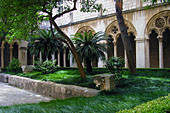
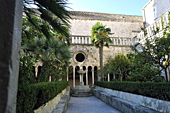
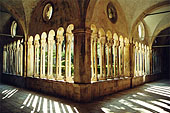

Church of the Holy Savior
The Church of the Holy Savior is located on the left after entering Old Town Dubrovnik from Pile Gate. It is the first church at the main street Stradun. The Andrijići brothers, domestic master builders from Korcula, build the church between 1520. and 1528. by the Dubrovnik Senat's gratitude. The church has typically Dalmatian Renaissance wheel-window front and Gothic interiors. Inside the church there is a magnificent painting of the Ascension by Pietro Antonio da Urbino (1528).
This small votive church, according to the decision by the Dubrovnik Senate, was built as a sign of gratitude for the salvation from the earthquake which struck the same year. In the 1667. earthquake, the church remained undamaged, and has been preserved to the present day in its original decor.
With the construction of this lovely little church with its decorative facade, they left behind yet another pearl of Dubrovnik Renaissance architecture.
Location
Poljana Paska Miličevića, 20 000 Dubrovnik
Opening hours / Price
9 am -6 pm, entrance fee: 30 kn, children 15 kn
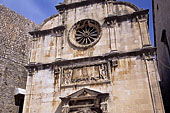
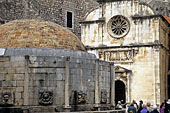
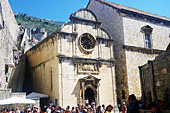
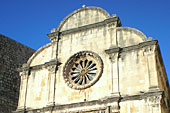
Dubrovnik Cathedral
Dubrovnik Cathedral stands close to the Old Town harbour and was rebuilt after the 1667 earthquake. Inside, it is known for its treasury, which holds a collection of relics and religious objects connected to the city’s history.
St Blaise Church
St Blaise Church is dedicated to the city’s patron saint and occupies a central position on Luža Square. Its steps and terrace are often used as a gathering point during festivals and events, making it one of the most active religious landmarks in the Old Town.
Dominican Monastery
The Dominican Monastery is positioned near Ploče Gate and forms part of the city’s defensive line. It has a peaceful cloister and a notable art collection, including works by local and regional painters, offering a quieter contrast to the busy streets nearby.
Gates, fountains and main street landmarks
Most visitors first experience Dubrovnik through its main gates, fountains and the central street. These monuments mark the points where people enter the Old Town, fill water bottles, meet for tours and orient themselves before exploring quieter side streets.
Stradun (Placa)
The main street in Old Town Dubrovnik is called STRADUN or PLACA. It is a, approximately 300 meter long, pedestrian zone and it runs from the Pile to Ploče gates, following the line of the channel that once divided the town into two parts. The street came into being in the 12th century, was paved in 1468. and reconstructed after the earthquake of 1667. The limestone pavement, polished by use, shines like glass after rain.
The houses on each side, though preserving an ancient ground plan, also date from the 17th century, their elevation and style being uniform. Their shops mostly have the characteristic "na koljeno" combined door and counter. The "na koljeno" type consists of a door and window in a single frame spanned by a semicircular arch. The door was kept closed and goods handed over the sill, which served as a counter.
Location
Placa, 20 000 Dubrovnik
Opening hours / Price
24 hours, free
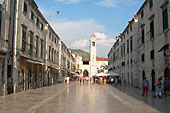
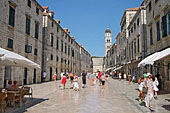
Pile Gate
At the entrance gate to the Old Town from the west there is a stone bridge within two Gothic arches, designed by Paskoje Miličević (1471). That bridge ends at another bridge, wooden drawbridge which used to be pulled up every evening. Above the bridges, over the arch, the statue of city patron St. Blaise (Sv. Vlaho) is set.
Location
Pile Gate Old Town Dubrovnik entrance, 20 000 Dubrovnik
Opening hours / Price
24 hours, free
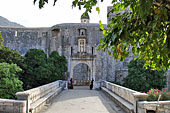
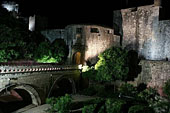
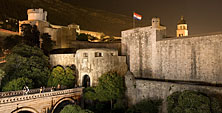
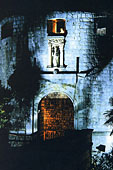
Ploče Gate
Ploče Gate is the eastern entrance to the Old Town, closest to the Old Port, Banje Beach and several hotels and apartments. It is often quieter than Pile Gate and is a useful access point if you are staying on that side of town or planning to take a boat trip from the harbour.
Big Onofrio's Fountain
Located at the open space right after passing Pile gate and entering the main street of Old Town Dubrovnik. It is a 16-sided drinking fountain built by Onofrio de la Cava (1438. - 1444.). The Fountain is part of the town's water supply system which Onofrio managed to create by bringing the water from the well in Rijeka Dubrovačka. The well is located 20 km from Big Onofrio's Fountain and this construction was a masterpiece of that time.
In 1436. the Dubrovnik Republic concluded a contract with the Neapolitan architects Onofrio della Cava and Andriuzzi de Bulbito about the construction of a water supply system inside the Old Town. The first part of that project was already completed in 1438, and Onofrio continued working on it until he left Dubrovnik in 1443. Onofrio's Large Fountain was sculpted and decorated after Onofrio's project by Petar Martinov from Milan and local artisans.
The fountain suffered heavily in the 1667 earthquake when almost all decoration was damaged except 16 stone-carved water openings called maskerons.
Location
Poljana Paska Miličevića, 20 000 Dubrovnik
Opening hours / Price
24 hours, free
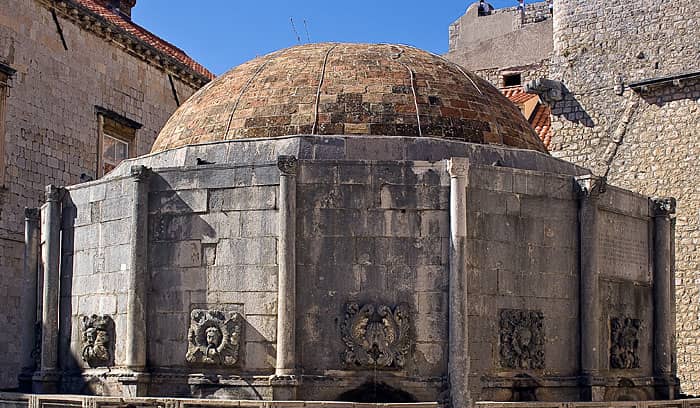
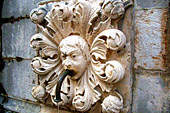
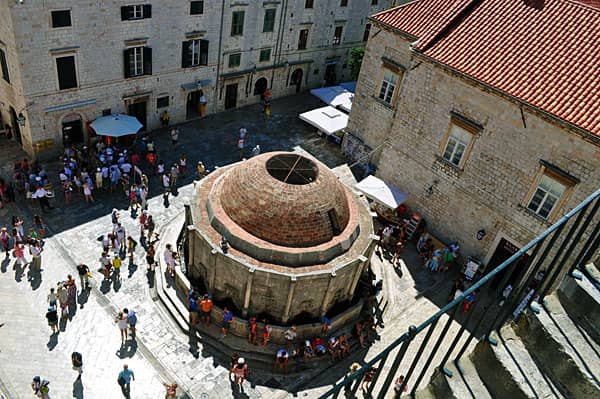
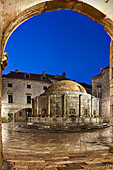
Small Onofrio's Fountain
Built by Petar Martinov in 1441 in the shape of an octagonal basin with defaced sculptural panels, from which rises a 'baroque-Gothic' column recalling the fountains of Viterbo.
Location
Poljana Paska Miličevića, 20 000 Dubrovnik
Opening hours / Price
24 hours, free
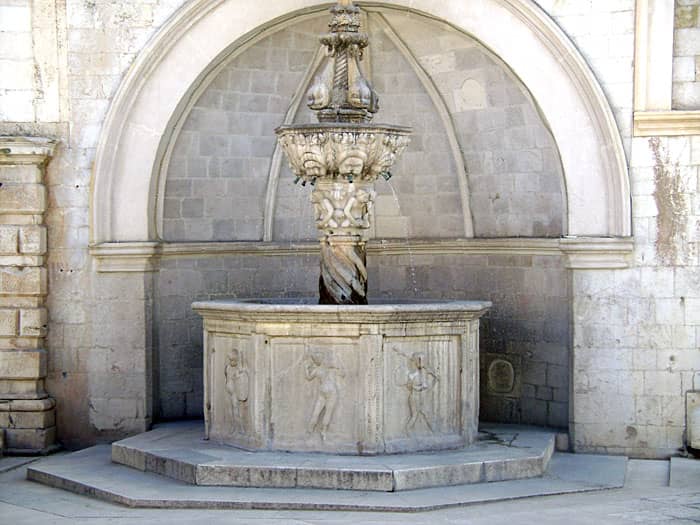
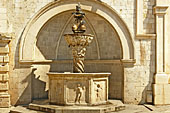
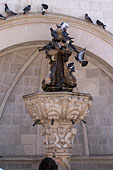
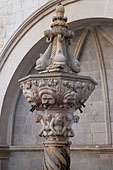
Small Onofrio's Fountain
Small Onofrio's Fountain is located at the opposite end of Stradun, near Luža Square and St Blaise Church. It is less imposing than the larger fountain but completes the historic water system that once supplied the city. The area around the fountain is often busy with events, street performances and open air gatherings.
Orlando's Column and Luža Square
Orlando's Column stands on Luža Square, close to St Blaise Church, Sponza Palace and the bell tower. It has long been a symbol of freedom and civic life in Dubrovnik and is still used as a focal point during festivals and official celebrations. The square around it is one of the most important open spaces in the Old Town and a good reference point when finding your way between monuments.
Dubrovnik City Walls
The City Walls are among the finest and most complete in Europe. They protected the freedom of Dubrovnik Republic for centuries. They surround the entire Old City with their 1940 meters of length and up to 25 meters of height. The whole City Wall complex was built from the 8th until the 16th century, consisting of an inner and outer section. There are five bastions, 3 circular and 12 square and rectangular towers, two corner towers, and one huge fortress. The outer section of City Walls consists of a lower wall, having 10 semicircular bastions built by the famous Italian architect Michelozzo. The town is defended by two more separate fortresses, at Revelin on the eastern side and Lovrijenac on the southwest side. The moat ran around the outside section of the City Walls.
Combine visiting Dubrovnik City Walls with Old Town walking tour and Cable Car ride: Check availability and prices
Location
Old Town Dubrovnik, 20 000 Dubrovnik
Opening hours / Price
08:00 - 19:00, from 40 Eur for adults, children up to 18 years 15 Eur
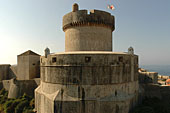
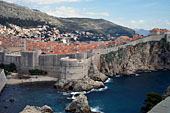
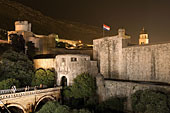
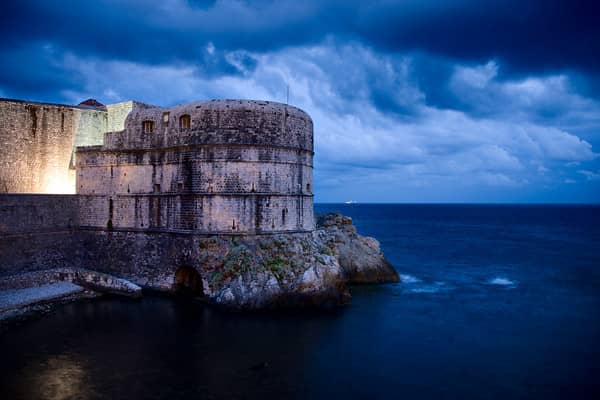
Fortress Minčeta
The most massive tower within the Old Town, located at the north side of the City Walls, provides one of the finest views to the city, its streets and buildings. It is the architectural work of Ranjina, Michellozzo Michellozzi, and was finally finished by Juraj Dalmatinac. At first it was a smaller square-shaped building, later on some parts were added, finally receiving its current look in 1464. Some Summer Festival performances take place at the terraces of this magnificent historical monument.
Combine visiting Fortress Minčeta with Dubrovnik City Walls, Old Town walking tour and Cable Car ride: Check availability and prices
Location
Minčeta Tower Old Town Dubrovnik, 20 000 Dubrovnik
Opening hours / Price
08:00 - 19:00, from 40 Eur for adults, children up to 18 years 15 Eur (part of City Walls ticket)

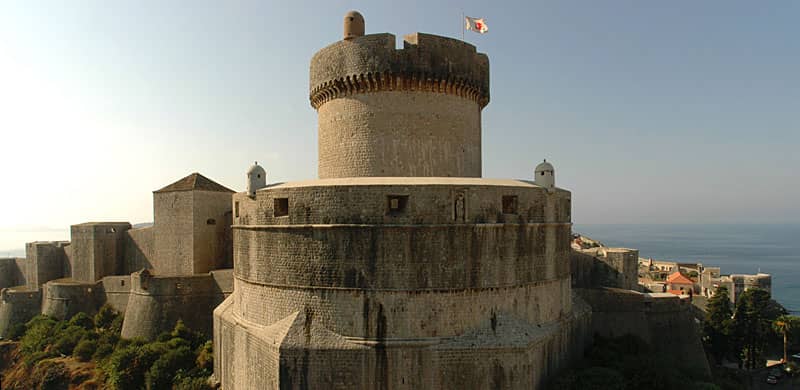
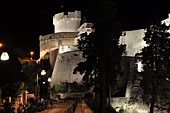
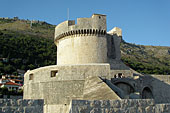
Fortress St. Ivan
Fortress St. Ivan guards the entrance to the Old Port and was an important part of Dubrovnik’s maritime defense. Today it houses museum spaces related to maritime history and natural sciences, making it easy to combine a short visit with a walk around the harbour.
Fortress Revelin
Fortress Revelin stands by Ploče Gate and was designed to protect the eastern approach to the city. Its large stone terraces offer views of the harbour and the nearby islands. The fortress is also used for cultural events during the summer season.
Fortress Lovrijenac
Located at the western side of the Town outside the City Wall at a 36 meters high cliff. It dominates, both the sea and the land entrances to the Town from the west. According to old scripts it was built in only three months. Today its interior is one of the most dignified stages in Europe, a well-known place for Shakespeare's Hamlet performances.
Fort Lovrijenac was used as one of Game of Thrones, King's Landing filming locations and settings in Dubrovnik.
Fortress Lovrijenac is served as a key defensive point overlooking the western approach to Dubrovnik. It provides some of the best views of the Old Town, the walls and the sea. The interior space is often used for performances, particularly during the Dubrovnik Summer Festival.
Location
Ul. od Tabakarije 29, 20 000 Dubrovnik
Opening hours / Price
08:00 - 19:00, from 35 Eur for adults, children up to 18 years 15 Eur
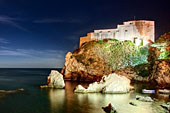
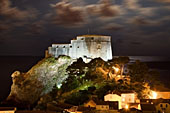
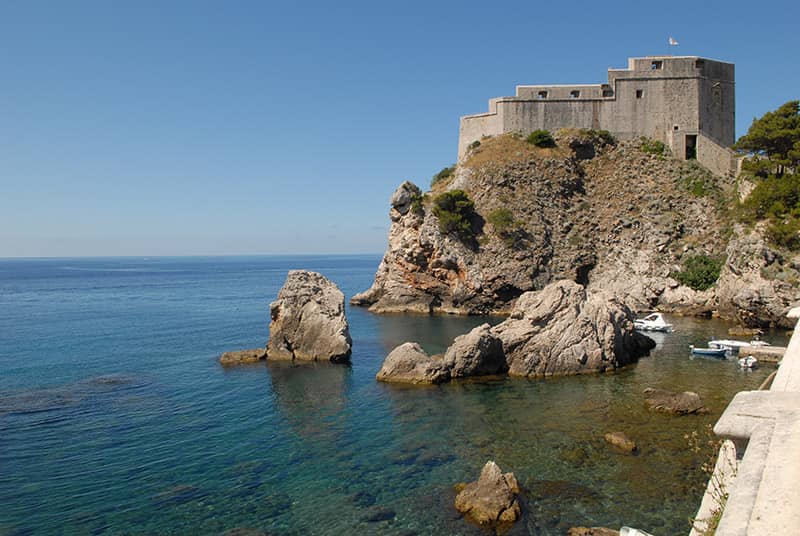
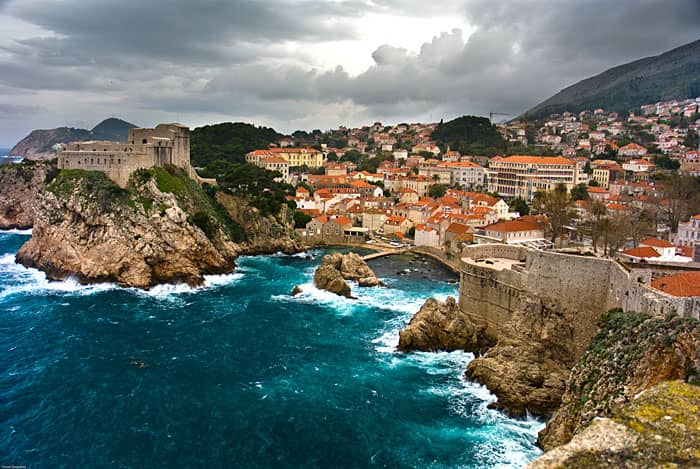
Ploče Gate
Entrance gate to Old Town Dubrovnik from the East. Outer Ploče Gate is built by Miho Hranjac in 1628., while the wooden drawbridge and twin-spanned stone bridge (15th C) by Paskoje Miličević are similar to those at Pile Gate. Over the bridge there is the statue of St. Blaise, the patron of Dubrovnik. It has inner and outer sections, while the approach is via a stone bridge. Built into Ploče's outer section is Revelin Fortress, that used to serve as a lookout point.
Location
Ploče Gate Old Town Dubrovnik, 20 000 Dubrovnik
Opening hours / Price
24 hours, free
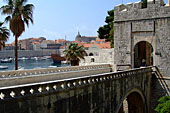
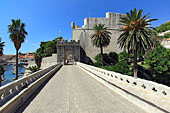
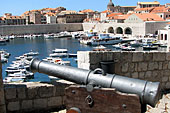
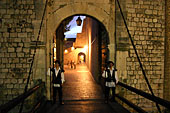
Fortress St. Ivan
Located at the south part of the City Walls, served as the protector of the City Harbor. It was erected in four stages between 1346 and 1557. Its final look dates from the 16th century. During night the city harbor was closed with a chain which was stretched from St. Ivan fortress to Kaše - the breakwater built in 15th century. Today, St. Ivan Fortress hosts three museums.
On the ground floor is the Aquarium, stocked with fish from various parts of the Adriatic Sea. On the upper floors are the Ethnographic Museum and a Maritime museum in which four sections are devoted to the Dubrovnik Republic maritime period, the age of steam, the Second World War and to the techniques of sailing and navigation.
Location
Fortress St. Ivan Old Town Dubrovnik, 20 000 Dubrovnik
Opening hours / Price
08:00 - 19:00, from 35 Eur for adults, children up to 18 years 15 Eur
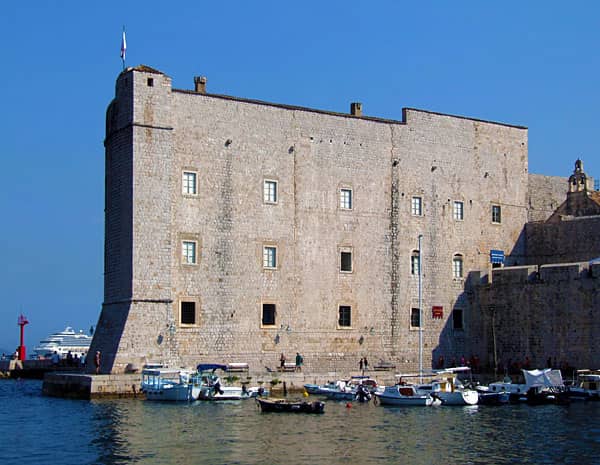
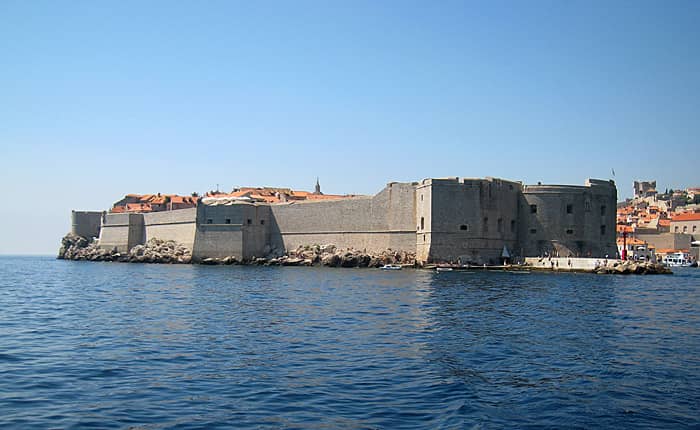
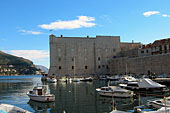
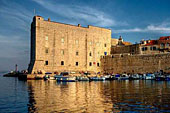
Fortress Revelin
Built in the 16th century (1500 - 1538) at the eastern side of the city, outside the city walls, in the form of an irregular square. It was designed by the architect Anton Ferramollino. The fortress was built to protect the City Harbor, Ploče Gate, and the City Bridge. Its enormous terrace also makes a fine natural stage for performances in summer.
Location
Ul. Svetog Dominika, 20 000 Dubrovnik
Opening hours / Price
08:00 - 19:00, from 35 Eur for adults, children up to 18 years 15 Eur
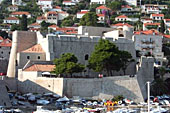
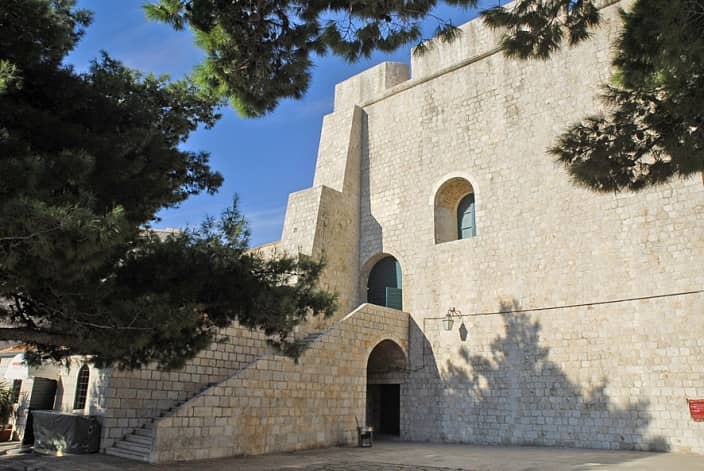
Palace Sponza
Throughout the times of the Dubrovnik Republic it had different purposes and was used as a custom house, a mint and main warehouse ( known at different times as the Pontik, Divona or Dogana). Sponza was one of the more important buildings in the city and remained in continuous public use until the end of the 19th C. Sponza was designed by Paskoje Milièević, built by Petrović, Radivojević, and the Andrijići brothers (1516-1522). It represents a harmonious blend of Gothic and Renaissance architecture; at the ground floor there are monumental renaissance arcades; at the first floor we find elegant gothic monofores and trifores; the second floor is decorated with Renaissance windows, while the roof is built in Gothic style.
The interior of Sponza consists in a round and spacious court, arranged as a double cloister, with round arches below and slightly pointed arches on the first floor. The first floor was used for social gatherings and meetings of learned and literary societies. The ground floor houses exhibitions of artists and festival concerts and contains the original 16th C mechanism that controls the town bell and clock (called Zelenci - Maro and Baro).
Location
Stradun 2, 20 000 Dubrovnik
Opening hours / Price
08:00 - 20:00, free




Planning your time around Dubrovnik monuments
The main monuments of Dubrovnik can be seen at different speeds depending on your interests and the time of year. Some visitors focus on a short highlights walk, while others combine monuments with museums, viewpoints or time by the sea.
Suggested half day Old Town route
If you have limited time, a half day is enough to see the main landmarks. Start at Pile Gate, walk along Stradun, stop at Onofrio's Fountain and the Church of the Holy Savior, then continue to Luza Square and St Blaise Church. Finish at the Old City Port for views of the harbour and boats.
One day visit with City Walls
To see Dubrovnik at a slower pace, plan a full day that includes the City Walls. Walk the walls early in the morning or later in the afternoon, then explore churches, monasteries and squares inside the Old Town. This approach leaves time for breaks and a museum visit, so it helps to plan around museums in Dubrovnik.
Combining monuments with other activities
Many visitors combine monument sightseeing with nearby attractions. After exploring the Old Town, you can relax at Banje Beach, take the cable car to Mount Srd for panoramic views, or visit Lokrum Island for a short escape from the crowds. For more ideas on how to balance history with leisure, see the best things to do in Dubrovnik.
Frequently asked questions about Dubrovnik monuments
What are the main monuments to see in Dubrovnik Old Town?
The most visited monuments are along Stradun and near the two main gates. Most first-time visitors focus on Pile Gate, Onofrio's Fountain, the main squares and churches, the Old Port area, and the City Walls with their towers and viewpoints.
Can you see the main Dubrovnik monuments in one day?
Yes. A full day is enough to walk through the Old Town highlights and include one bigger ticketed attraction such as the City Walls. If you also want museums, longer breaks, or a slower pace, plan two days.
What is the best time of day to visit Dubrovnik monuments?
Early morning and late afternoon are usually the most comfortable times, especially in warmer months. You will avoid the strongest sun, and many of the busiest areas feel calmer before midday.
Do Dubrovnik monuments require tickets?
Many monuments can be enjoyed from the outside for free, while some sites require an entry ticket. The City Walls are the most common paid attraction. For churches and monasteries, rules vary, so check signs at the entrance or ask locally.
Is the Dubrovnik Pass worth it for monuments?
It can be good value if you plan to visit multiple paid attractions and museums during your stay. If you only want a short Old Town walk and do not plan paid visits, you may not need it.
Are Dubrovnik monuments suitable for children?
Yes, especially the outdoor landmarks such as gates, fountains, squares, and viewpoints. The City Walls can also be a highlight, but there are many steps and limited shade, so plan breaks and carry water.
Is there a dress code for churches and monasteries?
Some religious sites expect modest clothing, especially during services. It is best to cover shoulders and avoid beachwear when entering churches and monasteries.
Are Dubrovnik monuments accessible for visitors with limited mobility?
The Old Town has steps, uneven stone streets, and occasional steep sections. Some areas are easier than others, but the City Walls and several viewpoints include stairs. If accessibility is important, plan a shorter route focused on Stradun and the main squares.
More culture and things to see in Dubrovnik
After exploring Dubrovnik’s main monuments, you may want to go deeper into the city’s cultural scene or balance sightseeing with other experiences. The guides below help you plan what to see next, depending on your interests and the time you have.
Culture, museums and galleries
Dubrovnik Monuments - an overview of the city’s historic landmarks, churches, gates and fortresses inside and around the Old Town.
Museums in Dubrovnik - maritime, historical and cultural museums that add context to the monuments and the city’s past.
Art galleries in Dubrovnik - contemporary exhibitions and smaller galleries showcasing local and international artists.
More ideas on what to do in Dubrovnik
The best things to do in Dubrovnik - main sights, walks and practical suggestions for first-time visitors.
Best day trips from Dubrovnik - islands, coastal towns and nature areas that are easy to visit from the city.
Activities in Dubrovnik - outdoor, sea and adventure experiences to combine with sightseeing.
Events in Dubrovnik - festivals, concerts and seasonal happenings taking place during your stay.
